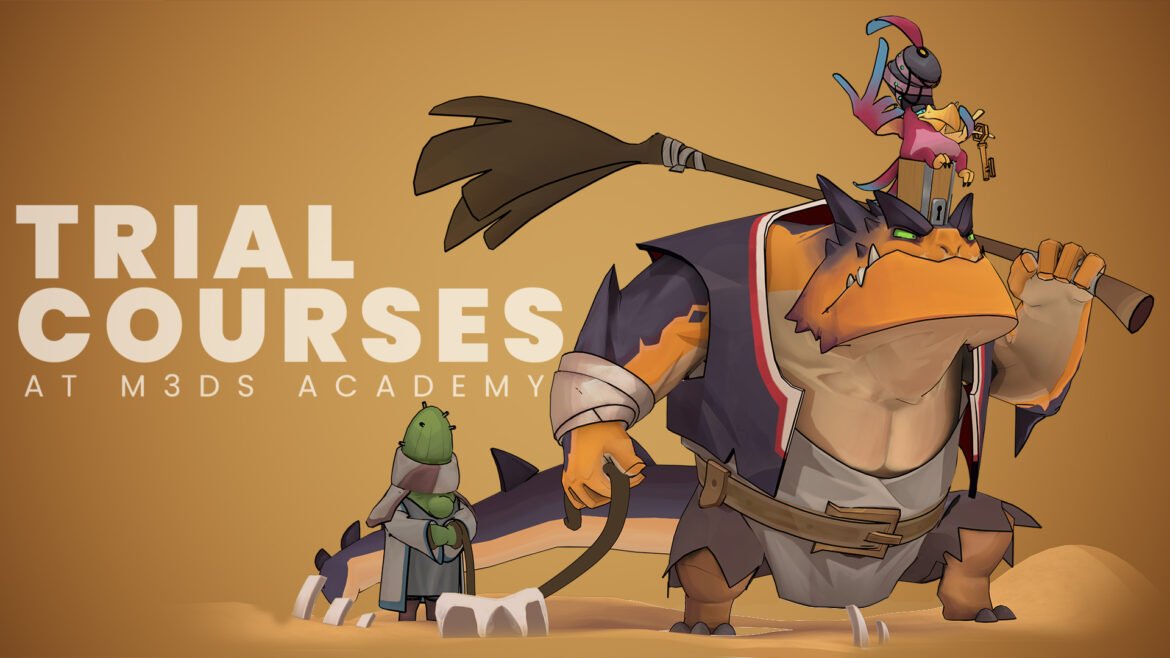Introduction to 3D Texturing
M3DSAcademy is a leading learning platform that helps beginners master 3D texturing techniques essential for realistic and stylized digital art. Texturing is the process of applying surface detail, color, and material properties to 3D models, transforming them from flat geometry into visually rich objects. Understanding texturing is vital for games, films, animations, and virtual reality projects.
Understanding PBR Workflow
Physically Based Rendering (PBR) is the industry standard for texturing. PBR uses material properties to ensure objects react to light realistically. Key maps include albedo (color), metallic, roughness, normal, and ambient occlusion. Mastering these maps allows artists to achieve consistent results under different lighting conditions. Beginners at M3DSAcademy learn to create and combine these maps effectively to produce lifelike materials.
The Importance of UV Mapping
UV mapping translates 3D geometry into 2D coordinates so textures can be accurately applied. Proper UV layouts prevent stretching, seams, and distortion. Artists must maintain consistent texel density for uniform detail across surfaces. M3DSAcademy emphasizes hands-on practice with UV unwrapping tools to ensure beginner learners develop precision and efficiency.
Types of Texture Maps
Texture maps define different material characteristics:
- Albedo Map: The base color of the object.
- Normal Map: Simulates surface detail without extra geometry.
- Roughness Map: Controls surface glossiness.
- Metallic Map: Defines metal surfaces and their reflection behavior.
- Ambient Occlusion Map: Adds shadow details in crevices.
Understanding the function of each map ensures realistic and visually appealing textures.
Procedural vs. Hand-Painted Textures
Procedural textures are algorithmically generated, allowing for scalable and adaptable materials. Hand-painted textures focus on artistic expression, commonly used in stylized games and animations. Beginners at M3DSAcademy practice both approaches, learning to blend procedural efficiency with hand-painted creativity for optimal results.
Layering and Material Complexity
Realistic surfaces often contain multiple layers, such as paint over metal or dirt accumulation on stone. Artists use masks and layers to control the influence of each material component. Layering adds depth and authenticity, allowing textures to tell a story about the object’s history and usage.
Reference and Observation
Effective texturing starts with strong reference. Observing real-world materials helps artists replicate textures accurately. Color, wear patterns, reflectivity, and imperfections all inform texture creation. M3DSAcademy encourages students to build a reference library to improve consistency and realism in their work.
Baking Maps for Detail Transfer
Baking transfers high-resolution detail from sculpted models onto low-poly meshes. Common baked maps include normal, curvature, ambient occlusion, and height maps. These maps allow beginners to retain intricate details while maintaining optimized geometry for real-time applications.
Texture Resolution and Optimization
High-resolution textures provide detail but can impact performance. Optimizing textures using tiling, texture atlases, and appropriate resolution ensures quality while maintaining efficiency. M3DSAcademy teaches students to balance visual fidelity with performance requirements, crucial for games and interactive media.
Applying Textures in 3D Software
Textures are applied in software like Blender, Maya, or Substance Painter. Artists learn to assign materials, adjust UVs, and tweak shader properties to achieve the desired look. Understanding software-specific tools ensures efficient workflow and professional-quality results.
Creating Organic and Hard Surface Textures
Organic textures, such as skin, foliage, and cloth, require subtle color variation and fine detail. Hard surface textures, such as metal, wood, or concrete, focus on precise edges, scratches, and wear patterns. Practicing both types allows beginners to handle a wide range of projects.
Lighting and Texture Interaction
Textures are influenced by scene lighting. PBR materials respond realistically to light, while stylized textures rely on artistic interpretation. M3DSAcademy teaches students to test textures under different lighting setups to ensure they maintain clarity and visual impact across various scenarios.
Common Mistakes and How to Avoid Them
Beginners often struggle with UV stretching, repetitive patterns, or unrealistic material properties. Regularly reviewing work, comparing with references, and testing in different lighting conditions help prevent these issues. M3DSAcademy emphasizes iterative practice to develop problem-solving skills.
Building a Texturing Portfolio
A strong portfolio demonstrates both technical proficiency and artistic style. Beginners should showcase a variety of materials, including organic and hard surface objects, with clear presentation and effective lighting. M3DSAcademy provides guidance on portfolio creation to enhance career opportunities.
Practice Projects and Exercises
Hands-on exercises reinforce learning. Projects like texturing household items, props, or simple characters help students grasp fundamental techniques. More complex scenes, such as vehicles, environments, or creatures, develop problem-solving and creativity. Consistent practice builds confidence and expertise in texturing.
Industry Applications of 3D Texturing
Texturing is vital in games, films, animations, VR/AR, product visualization, and architectural renderings. Proficiency in texturing maps, PBR workflows, and software tools equips beginners to meet industry demands. Understanding pipeline integration ensures smooth collaboration across departments.
Conclusion
3D texturing is essential for bringing models to life, adding realism, personality, and storytelling. M3DSAcademy provides beginners with the foundational knowledge and hands-on practice necessary to excel in this field. By mastering UV mapping, PBR materials, procedural and hand-painted techniques, and optimization strategies, learners can create high-quality textures suitable for professional projects.
This article offers a complete introduction to 3D texturing for beginners, emphasizing practical skills, creative observation, and industry-ready workflows.

